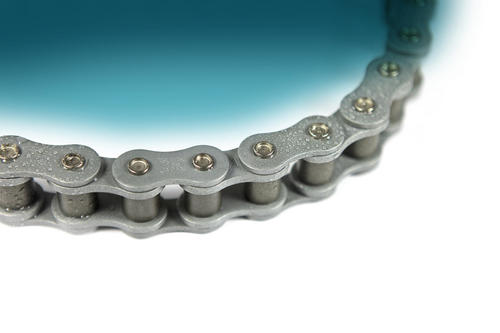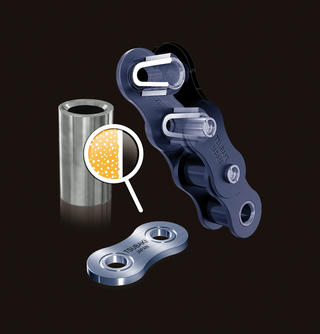Considering environmental challenges for chain performance
Modern Engineering maintenance planning is a marathon not a sprint, so MRO (maintenance, repair, overhaul) specialists are usually looking for long term reliability rather than a quick fix that may not last the distance.
Application environment is a key factor in selecting an adequate long term solution, especially for a transmission component like a chain.
Peter de Blok, Sales Manager EMEA for Tsubakimoto Europe B.V., considers the effect of various working environments on chains in application.

In our daily lives we know that if we buy a cheap product it is unlikely to last as long as one with a quality pedigree behind it. In the commercial and industrial world, we quantify this as total cost of ownership (TCO) - initial purchase cost, plus running and maintenance costs over the life of the product, plus replacement costs and production downtime.
Again, referring to our daily lives, we instinctively know that we can use a budget product in non-demanding duties, but when the going gets tough quality goods will be required. In industrial parlance we would refer to a harsh working environment, which for a chain could include dust, water, heat, cold, aggregates, shock impact loads and harsh chemicals. So, what challenges do different industries suffer?
Heavy industries typically have tough working environments: steel mills can be so hot that any metal component can be weakened; it is virtually impossible to keep dust and grit out of machinery in mines and quarries; marine and shoreside environments will always have salt corrosion potential. Meat storage facilities will be refrigerated so lubrication is often problematic.
Modern industries are not without difficulties either. Electronic production uses some harsh chemicals, as do paint shops and pickling (surface treatment) plants. Many manufacturing processes requires stop/start machine cycles, so shock loads are inevitable. Logistics and materials handling can be hard and physical.
From this we can see that virtually every working environment has its own set of challenges, so it is no surprise that Tsubaki produces a range of industrial chains each designed to address a particular environmental condition. Thus, MRO engineers can select a chain appropriate to working conditions, and this will reduce running and maintenance costs while also optimising life expectancy.
For example, Tsubaki's Lambda lube-free chain has established itself as a firm favourite in many different industries and applications. Its sintered bushes are impregnated with lubricant which aid efficient running and long life yet cannot leak oil to contaminate products such as foodstuffs, clothing, paper items, coloured surfaces or packaging.
With so much chain deployed in wet, humid and chemically aggressive environments Tsubaki has developed Neptune which uses a special resin coating for superb corrosion and chemical resistance. Each part of a Neptune chain is individually surface treated (unlike chains that are surface treated after assembly) so that the whole chain is resistant and there are no inclusions where corrosion can start. It is regularly used in applications where water is present, in mushroom farms where humidity is usually 90% or higher, fresh and frozen food plants, for outdoor materials handling and other similar applications.

Heavy duty chain is a must in physically demanding applications such as mining, rig drilling, bulk handling, steel manufacturing, agriculture, wastewater treatment and marine environments. Tsubaki has a long history of developing and constantly improving chain to meet the demands of each market.
Tsubaki has long understood that if you match a chain to its environment you will optimise long term performance and minimise life time costs. The consequent increases in productivity can be quantified as a monetary saving over time for any given application and is usually manna to any boss's ear.
Very often, the greatest challenge is convincing the budget holders to invest in specialist chain, but once the benefits are appreciated and the performance proven, the arguments for more 'cost-effective' alternative soon evaporate.
In short, MRO engineers can make a significant contribution to their company's productivity and profitability by picking the best chain for each application.
